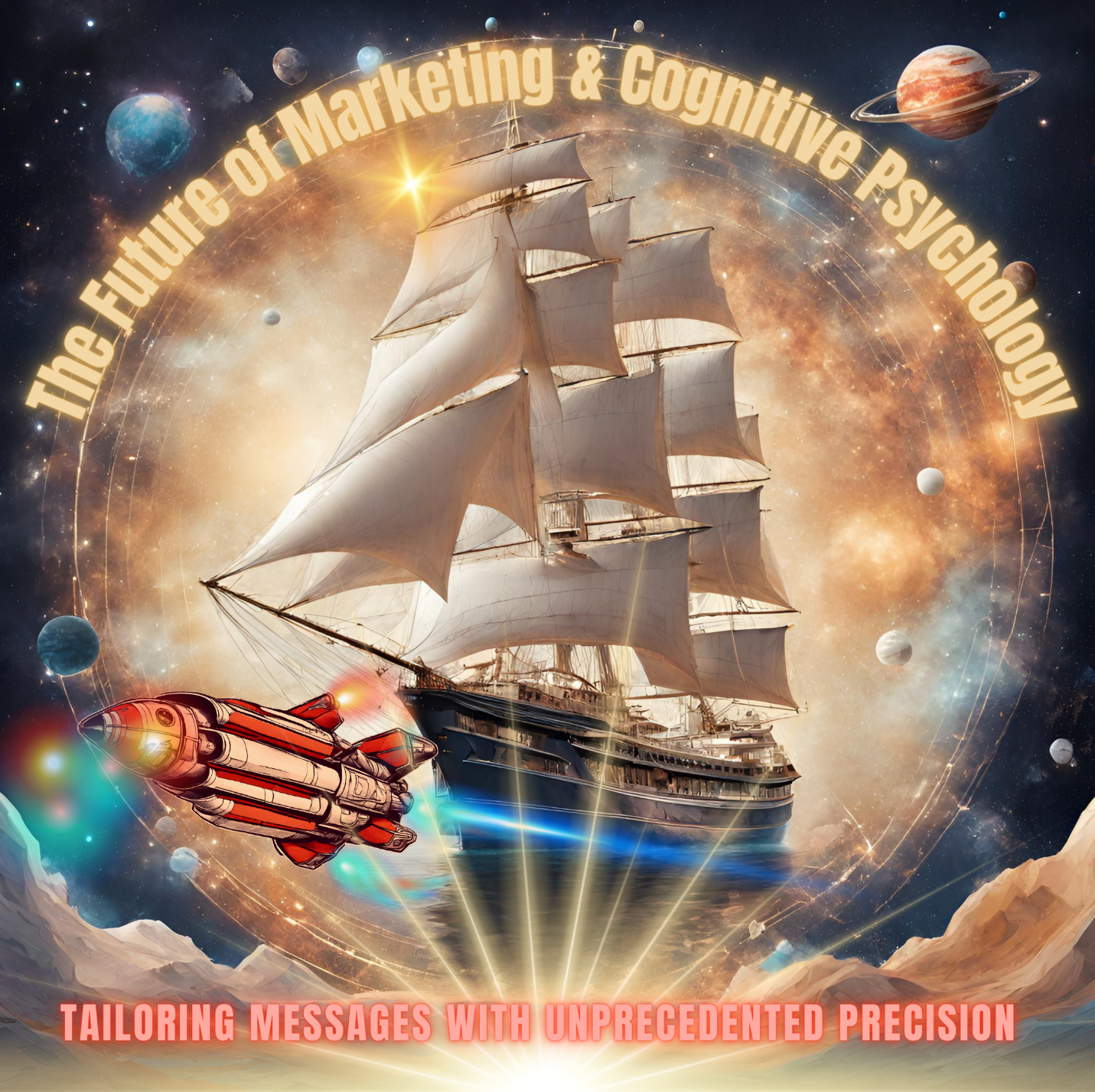
The Cultural Lens in Marketing and Communication
To the Reader:
In this white paper series, we unveil the secrets held at the intersection of three pillars of professional expertise, revealing a roadmap for those who aspire to excel in the ever-evolving field of marketing and communication. Welcome to a world where expertise is the ultimate currency, and Multimedia Marketing Group is your trusted guide on this transformative journey. The series embarks on an expedition through the realms of cognitive psychology, the 10,000-hour concept, and the unique role of Marketing Diagnostic Experts. These three pillars intersect to unveil the intricate interplay between science and intuition in advertising, marketing, and communication. This document is divided into three distinct chapters, each shedding light on a fundamental aspect of this journey.
Chapter 4
Understanding the significance of cognitive psychology in marketing also requires recognizing the cultural context. While cognitive psychology offers universal principles, the way these principles manifest can vary across cultures. The way people perceive, think, and make decisions is influenced by cultural norms and values.
significance of cognitive psychology in marketing also requires recognizing the cultural context. While cognitive psychology offers universal principles, the way these principles manifest can vary across cultures. The way people perceive, think, and make decisions is influenced by cultural norms and values.
Marketers must navigate the intricacies of cultural differences to effectively engage with diverse audiences. This means tailoring marketing messages to resonate with the cognitive patterns and cultural backgrounds of specific target groups. What works in one culture may not work in another, and cognitive psychology helps us understand these nuances.
The cultural lens is a critical aspect of marketing and communication, influencing how messages are perceived and received by diverse audiences. In this chapter, we’ll delve into the importance of the cultural lens, how it impacts strategies, and the key considerations for effective cross-cultural communication.
Understanding the Cultural Lens
The cultural lens refers to the perspective and worldview shaped by an individual’s cultural background. It encompasses various aspects, including:
- Values and Beliefs: Cultural backgrounds influence an individual’s values, beliefs, and moral standards.
- Language and Communication Style: Language and communication norms vary across cultures, affecting how messages are conveyed and interpreted.
- Social Norms and Behavior: Cultural norms dictate acceptable behavior, etiquette, and social practices.
- Symbolism and Semiotics: Different cultures may attach unique meanings to symbols, colors, and gestures.
- Aesthetics: Cultural preferences for design, aesthetics, and visual appeal can vary widely.
The Importance of the Cultural Lens
The cultural lens is crucial in marketing and communication for several reasons:
- Audience Understanding: Understanding the cultural lens helps in creating messages that resonate with the target audience.
- Relevance: Culturally relevant content is more likely to capture the audience’s attention and generate a positive response.
- Avoiding Misinterpretation: Ignoring cultural differences can lead to misinterpretation and misunderstanding, potentially harming the brand’s reputation.
- Building Trust: Demonstrating cultural sensitivity builds trust and credibility with the audience.
- Global Reach: In an interconnected world, the cultural lens is essential for reaching global markets.
Key Considerations for Cross-Cultural Communication
Effectively navigating the cultural lens in marketing and communication involves the following considerations:
- Research: Thoroughly research the target culture to understand its values, communication norms, and preferences.
- Language: Use language that is culturally appropriate and avoid idioms, colloquialisms, or slang that may not translate well.
- Visuals: Be mindful of visual elements, such as color choices and imagery, which can carry different connotations in various cultures.
- Tone and Messaging: Tailor the tone and messaging to align with the cultural values and expectations of the audience.
- Cultural Sensitivity: Practice cultural sensitivity by avoiding stereotypes and showing respect for the culture’s traditions and practices.
Challenges and Adaptation
Challenges in addressing the cultural lens include the potential for unintentional cultural insensitivity or misinterpretation. Adaptation involves a commitment to ongoing learning and cultural awareness, as well as the willingness to adjust strategies as needed.
Bridging Cultural Divides
The cultural lens is a bridge that connects diverse audiences and ensures that messages are meaningful, respectful, and effective. In the dynamic field of marketing and communication, recognizing the importance of the cultural lens is essential for building bridges and fostering engagement across different cultures.
By embracing the cultural lens, professionals can successfully navigate the complexities of global and cross-cultural communication, building strong connections and resonating with audiences worldwide.
Lessons from the Field
The real-world application of cognitive psychology in marketing and communication is a dynamic and evolving journey. Here are a few lessons that stand out:
The Power of Data: With advancements in technology, data-driven marketing is becoming increasingly prominent. By analyzing data on consumer behavior and preferences, marketers can fine-tune their strategies, creating highly personalized and effective campaigns.
The Marriage of Art and Science: Effective marketing requires a blend of creativity and scientific understanding. The most successful campaigns often combine artistic flair with cognitive insights, creating messages and experiences that resonate deeply.
Transparency and Trust: Ethical marketing practices build trust with consumers. Transparency in advertising and respect for consumer privacy are not only the right things to do but also create stronger and more lasting customer relationships.
Adaptation and Innovation: The marketing landscape is constantly evolving. Marketers must remain adaptable, open to innovation, and willing to update strategies as consumer preferences and technology change.
Cross-Disciplinary Collaboration: The convergence of cognitive psychology, neuroscience, and marketing has opened the door to cross-disciplinary collaboration. Researchers, psychologists, and marketers now work hand-in-hand to gain a deeper understanding of consumer behavior and create more effective campaigns.
A Journey of Continuous Learning
Cognitive psychology has revealed the inner workings of the human mind and, in doing so, has transformed marketing and communication. It’s a journey that’s far from over. As we continue to unlock the secrets of cognition, we find new ways to engage, persuade, and connect.
The future promises even greater integration of cognitive insights into marketing strategies. AI-driven technologies will analyze massive datasets to predict consumer behavior with unprecedented accuracy. Virtual and augmented reality will immerse consumers in brand experiences, leveraging cognitive psychology to create more realistic and engaging interactions.
The intersection of cognitive psychology and marketing is a realm of infinite possibilities, where creativity and science coalesce to shape the future of advertising and communication. Understanding how people think, perceive, remember, and make decisions has proven to be not just valuable but essential in a world where information is a powerful currency.
In a universe of ceaseless stimuli and choices, the knowledge drawn from cognitive psychology acts as a guiding star for marketers and communicators. It’s the science behind the art, the silent partner in the creative process, and the reason that messages, products, and experiences touch the human soul.
In this ever-evolving field of communication, marketers will continue to unravel the mysteries of the mind, fine-tune their strategies, and adapt to the shifting sands of consumer behavior. And through it all, the significance of cognitive psychology will remain a steadfast pillar, propelling us forward in the quest to connect, engage, and inspire.
As we journey the world of marketing and communication, we do so with the knowledge that understanding the human mind is both a profound responsibility and a boundless source of opportunity. With cognitive psychology as our guide, we navigate the complex labyrinth of the consumer’s psyche, unlocking doors to deeper, more meaningful connections and experiences.
The Science Behind the Art
The field of marketing and communication has evolved from being primarily creative to becoming a sophisticated science. Cognitive psychology serves as the backbone of this transformation, providing a scientific understanding of how people think, perceive, remember, and make decisions.
Every color choice in an ad, every word in a message, every element on a webpage, and every story told in an advertisement is now informed by cognitive psychology. It’s not just about creating beautiful visuals or catchy slogans; it’s about crafting experiences that resonate with the human mind on a deep level.
In a world where consumers are bombarded with information and choices, it’s the insights drawn from cognitive psychology that allow marketers to cut through the noise and truly connect with their audiences. It’s the understanding of how the mind works that enables them to design products and campaigns that are not just effective but also ethical and empathetic.
As technology continues to advance and consumer expectations evolve, the importance of cognitive psychology in marketing and communication will only grow. It’s the science that helps us unravel the mysteries of the human mind, and in doing so, it transforms the way we engage, inform, and persuade.

The Future of Marketing and Cognitive Psychology
As we look ahead to the future of marketing and communication, the role of cognitive psychology is poised to become even more critical. Advances in technology, data analytics, and personalization will enable marketers to tailor messages with unprecedented precision.
For instance, artificial intelligence and machine learning algorithms can analyze massive datasets to understand individual cognitive patterns and preferences. This enables marketers to deliver personalized content and product recommendations that resonate with consumers on a deep cognitive level.
Additionally, as our understanding of cognitive psychology continues to evolve, we can expect marketing strategies to become more ethical and consumer-centric. Strategies that aim to exploit cognitive biases may give way to those that genuinely benefit the consumer, enhancing brand trust and loyalty.
The story of cognitive psychology in marketing and communication is one of discovery, transformation, and innovation. It is a testament to the power of science to reshape the way we understand and connect with each other. As the narrative unfolds, we find ourselves on the brink of new chapters, ready to explore the next frontier of understanding, engagement, and inspiration.
The importance of cognitive psychology in marketing and communication is not just a footnote in the annals of advertising; it is the backbone upon which modern marketing strategies are built. It is a journey that has just begun, a story that continues to evolve, and a reminder that in the vast landscape of consumer engagement, understanding the mind is the compass that guides us forward.
This concludes the Four-Part White Paper Series
Categories
Recent Posts
- Maximize Your Reach: Essential Email Marketing Dos and Don’ts for Success July 9, 2024
- Social Media Day 2024 June 30, 2024
- Navigating the World of Social Media Advertising June 20, 2024
- The Power of Visual Content in Marketing April 8, 2024
- Hip Hopper Alert: Easter Bunny Steals the Show with Sunglasses Stunt March 31, 2024
- The Super Bowl Ads 2024 February 12, 2024
- Serving Our Client’s Social Media Platforms Branded Content February 5, 2024
- Days of Future Past January 31, 2024
- The Art of Blending Human Intuition and Data-Driven Insights January 31, 2024
- Beyond Intuition January 30, 2024
Recent Comments